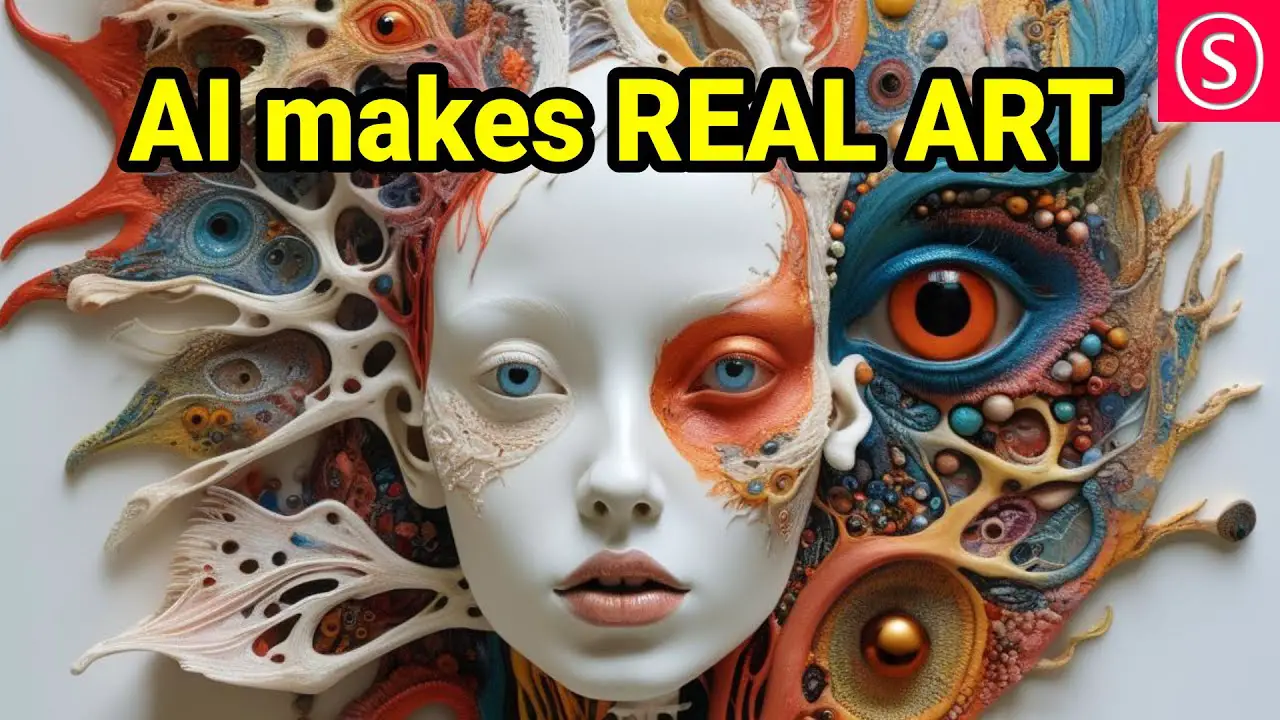Comprehensive Guide on Training Stable Diffusion Generative AI with Custom Images & Styles
September 10th, 2023

Comprehensive Guide on Training Stable Diffusion Generative AI with Custom Images & Styles
Step-by-Step Tutorial: Training Stable Diffusion Generative AI Model Using Custom Images and Styles
In the realm of artificial intelligence (AI), the concept of generative models has opened up new opportunities, particularly in image synthesis. The ability of these models to generate new data instances that resemble your training data is truly remarkable. Among these, stable diffusion generative AI models have become a popular choice for their proficiency in creating high-quality, varied outputs that are consistent with the input data distributions.
However, training such a model can be a complex task, especially when it comes to using custom images and styles. It requires not only a solid understanding of the underlying mechanisms of generative AI, but also expertise in image processing, style incorporation, and model stability evaluation. The key hurdle lies in how to effectively train a model that can generate reliable and coherent outputs without sacrificing the stylistic elements of the input data.
As per a report from MIT Technology Review, even though AI's potential was recognized as early as 1956, it’s the last decade that has seen the most rapid progress. This advancement is largely due to the development of sophisticated algorithms and the availability of abundant data and computational power. Among these developments, diffusion models have earned a notable mention for empowering various applications such as denoising, super-resolution, inpainting, and more.
Understanding the Basics of Stable Diffusion Generative AI Models
Starting off, it's crucial to grasp the fundamental concepts underlying stable diffusion generative AI models. The term 'Stable Diffusion Models' points towards a class of machine learning models that can learn complex data distributions, generate new samples, and provide insights into the structure of the input data. They belong within the broader domain of Generative AI, which focuses on creating new content from existing data.
Generative AI models work by understanding patterns in the source data and using this knowledge to create new data with similar characteristics. A good example is an AI model generating realistic images of people who do not exist. These models learn by continuously refining their internal understanding of the data distribution, aiming to match the real one as closely as possible.
Now, let's delve deeper into how these models function. Stable Diffusion Models usually involve two primary steps: a forward diffusion process that adds noise to the data, transforming it into a simple distribution (such as Gaussian), and a reverse process (the generative step) that starts from the simple distribution and removes the noise through a series of steps to recreate the complex original distribution.
Machine Learning, at its core, is the technology powering these models. It refers to a system's ability to learn and improve from experience without being explicitly programmed. Stable diffusion models are an example of unsupervised machine learning where the model learns to recognize complex patterns within the dataset independently.
To summarize, understanding these fundamentals about data distribution and machine learning offers a strong starting point for building and training stable diffusion generative AI models.
Key Steps in Training a Generative AI Model
Training a Generative AI model is not a one-step process; rather, it involves multiple stages that collectively contribute to the efficiency and accuracy of the model. The first step is usually preparing your data set and getting a clear understanding of its structure and characteristics.
Next comes the implementation of the appropriate algorithm. Different types of generative AI models such as Generative Adversarial Networks (GANs) or Variational Autoencoders (VAEs) require different algorithms for their training. It is crucial to select the algorithm that best aligns with the intended application of the model.
Model validation is an equally essential step. In this stage, you validate the model on a separate dataset (validation set) which was not used during the training phase. This helps in understanding how well the model will generalize to unseen data and adjust accordingly.
Finally, hyperparameter tuning comes into play. This refers to adjusting parameters like learning rate, batch size, number of epochs, etc., to ensure better performance of the model. Typically done via techniques like grid search or random search, hyperparameter tuning can significantly enhance the accuracy of your AI model.
Remember, each step plays a pivotal role in ensuring the successful training of a generative AI model, and skipping any one of them could lead to underperformance or instability of the model.
How to Use Custom Images in AI Model Training
Incorporating custom images in AI model training can significantly improve its predictive capabilities and overall performance. The process begins with image processing, a crucial step that involves converting input data (in this case, pictures) into a usable format. Techniques like cropping, resizing, and normalization are used to ensure the model receives consistent and high-quality data.
Once the images have been processed, the next crucial step is data augmentation. This technique involves transforming the existing set of images to create a 'new' dataset. It could be as simple as flipping an image horizontally or vertically, rotating it, or even changing its brightness or contrast levels. Data augmentation helps increase the diversity of the training data, leading to a more robust and versatile AI model.
Finally, feature extraction comes into play. In this stage, the model learns to identify key features from the images that are relevant for the task at hand. For instance, if you're training a model to recognize animals, it might learn to focus on features such as color, size, shape, and texture. Feature extraction allows the model to differentiate and categorize based on these distinct characteristics, enhancing its ability to accurately analyze and understand new unseen images.
By incorporating custom images and using image processing, data augmentation, and feature extraction, one can train a highly effective and reliable generative AI model.
Incorporating Styles into Your AI Model
In the journey of AI model creation, one crucial step revolves around the integration of styles. This process, often referred to as style incorporation, adds a unique aesthetic touch to your model's output.
Style transfer is an innovative technique in the domain of AI and deep learning that allows the replication of artistic styles onto other images. The underlying premise involves convolutional neural networks (CNNs) that have been trained on image recognition tasks. When these pre-trained networks are used, impressive results can be achieved, even with complex paintings or drawings.
An advanced version of this technique is neural style transfer. This method goes beyond applying an existing style to new content; it enables the generation of new, unique styles derived from multiple sources. With neural style transfer, you can blend the stylistic elements of several images into one coherent style, which can then be applied to your AI model's output.
The addition of aesthetic elements into the mix can significantly elevate the visual appeal of your AI model's results. Whether it's introducing color schemes, themes, textures, or patterns, aesthetic considerations contribute towards making the final product more engaging. Furthermore, by fine-tuning these elements, you can better align the model's output with specific design preferences or brand guidelines.
Remember, the successful incorporation of styles into your AI model not only enhances its outputs but also enriches user experience and engagement levels. It's a bright intersection of technology and art where creativity meets function.
Evaluating the Stability of Your Trained AI Model
After successfully training your AI model with custom images and styles, it's crucial to evaluate its stability. This process primarily involves using evaluation metrics, performing stability tests, assessing performance measures, and ensuring the robustness of your model.
Evaluation Metrics
In machine learning models, evaluation metrics are used to measure the quality and effectiveness of a trained model. Choosing the right metric depends on the type of problem you're solving - for instance, regression problems might use Mean Squared Error or R-Squared, whereas classification problems might use Accuracy or F1 Score. The choice of metric should reflect the goals and constraints of your AI project.
Stability Testing
Stability testing plays a critical role in ensuring that your AI model behaves well under various conditions and maintains its performance over time. It involves running the model under different scenarios and datasets to verify its ability to produce consistent outputs. Stability testing can help identify whether the model is sensitive to small changes in input, which would indicate potential instability.
Performance Measures
Performance measures provide quantifiable evidence of how well the model performs. These usually involve calculations like precision, recall, area under the curve (AUC), among others. Performance measures aid in comparing different models and selecting the best one based on its predictive capacity and efficiency.
Model Robustness
Robustness of an AI model refers to its ability to maintain performance across varying conditions, including changes in the input data distribution. A robust model should not only perform well on the data it was trained on but also generalize well to unseen data. This can be evaluated through techniques like cross-validation or by testing the model on a completely separate validation dataset.
In conclusion, evaluating the stability of your AI model is a multi-faceted task, involving rigorous testing and assessment of various metrics. By carefully considering these aspects, you will ensure that your stable diffusion generative AI model performs at its best and provides consistent, reliable results. Mastering the process of training a stable diffusion generative AI model with your custom images and styles can pave the way to creating unique, automated content tailored to specific aesthetic preferences. This skill opens up a world of possibilities in various fields including art, design, advertising, and more. By understanding the fundamentals of AI and machine learning, implementing the right algorithms for training, utilizing custom images effectively, incorporating styles, and evaluating the stability of your model, you become an active contributor in this exciting realm of technology. Remember, the beauty of AI is its potential for continual learning and improvement. So keep experimenting, refining your models, and pushing the boundaries of what's possible!
Other articles
September 23rd, 2023
Unveiling Voice Cloning: The Process and AI Involvement
ificial Intelligence, and its diverse applications and implications. read more...
September 5th, 2023
This Lora makes REAL ART – XL_more_art-full for SDXL
rained on all kinds of … read more...
September 26th, 2023
Guide to Using GPT-4 API for Task Management: Creating Weekly Schedules
through creating a weekly schedule using AI. read more...




